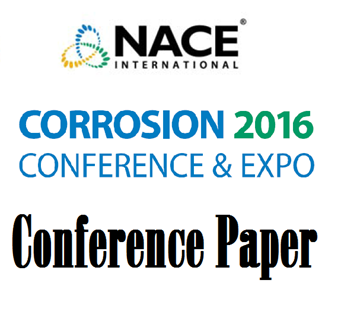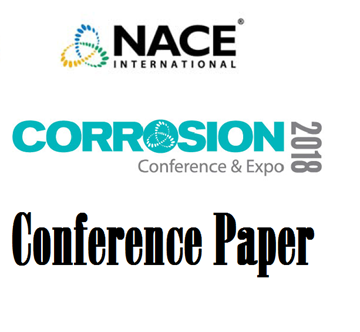Search
Products tagged with 'sulfide stress cracking'
View as
Sort by
Display
per page
03102 LIMITATIONS OF 17- 4 PH METALLURGICAL, MECHANICAL AND CORROSION ASPECTS
Product Number:
51300-03102-SG
ISBN:
03102 2003 CP
Publication Date:
2003
$20.00
04649 An Overview of NACE International Standard MR0103 and Comparison with MR0175
Product Number:
51300-04649-SG
ISBN:
04649 2004 CP
Publication Date:
2004
$20.00
51316-7155-Effect of Sidegroove Root Configuration on Edge Fracture on DCB Test
Product Number:
51316-7155-SG
ISBN:
7155 2016 CP
Publication Date:
2016
$20.00
51316-7203-The Effect of Notch Configuration on NACE TM0177 DCB Elastic Compliance and Recommendations for Futu
Product Number:
51316-7203-SG
ISBN:
7203 2016 CP
Publication Date:
2016
$20.00
51318-10495-Nanostructured Steel Susceptibility to Sulfide Stress Cracking
Product Number:
51318-10495-SG
Publication Date:
2018
$20.00
51318-10650-Effect of heat treatment on mechanical properties and corrosion resistance of Nickel Alloy UNS N0771
Product Number:
51318-10650-SG
Publication Date:
2018
$20.00
51318-10688-Evaluation of Corrosion and EAC Susceptibilities of Materials Used for Wireline/Slickline Downhole Environment in HPHT Sour Environment
Product Number:
51318-10688-SG
Publication Date:
2018
$20.00
51318-10821-Technical evaluation of cold end-sizing and stress-relieving mill operations while preserving the SSC resistance of sour service OCTG pipes
Product Number:
51318-10821-SG
Publication Date:
2018
$20.00
51318-10919-The Study on Residual Stresses in OCTG and Its Effect on Pipe Sour Cracking (SSC) Performances
Product Number:
51318-10919-SG
Publication Date:
2018
$20.00
51318-11070- Corrosion and SSC Resistant Cladding Material for H2S/CO2 Oil and Gas Containing Environment
Product Number:
51318-11070-SG
Publication Date:
2018
$20.00
51318-11129-The effect of side-groove configuration on NACE TM0177 DCB elastic compliance
Product Number:
51318-11129-SG
Publication Date:
2018
$20.00
51318-11229-Sour Service Fitness for Purpose Testing of Linepipe using Full Ring 4-pt BB and Large DCBs
Product Number:
51318-11229-SG
Publication Date:
2018
$20.00












